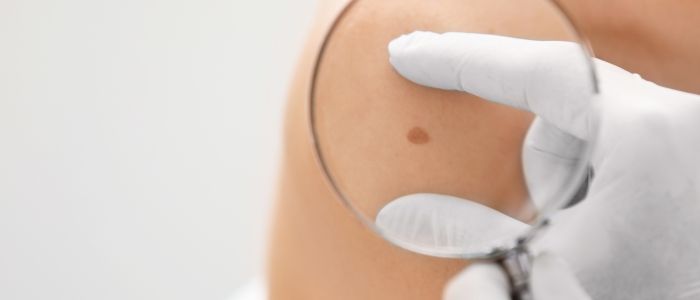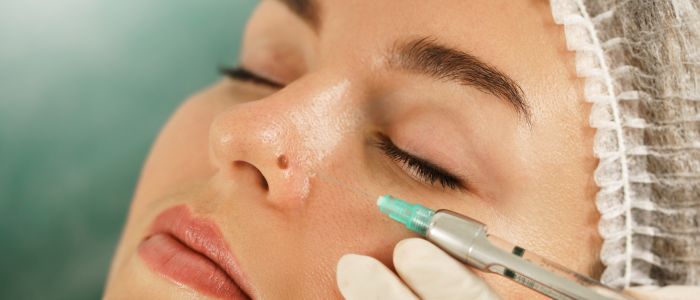
Table of Contents
- A Guide to Excision Biopsy Procedure and Recovery Process
- What Happens During an Excision Biopsy for Skin Cancer
- Pain Management and Anaesthesia Options
- How Long the Biopsy Takes
- Where Is the Procedure Performed?
- Post-Biopsy Care and Recovery
- Caring for the Biopsy Site
- Managing Discomfort and Swelling
- Signs of Complications to Watch For
- When to Contact Anca
- Expected Healing Timeline
- Factors That Influence Recovery Time
- FAQs about Excision Biopsy for Skin Cancer
- Further Reading about Procedures at Cheshire Cosmetic Surgery
A Guide to Excision Biopsy Procedure and Recovery Process
Skin cancer is one of the most common types of cancer, often caused by excessive exposure to ultraviolet (UV) rays from the sun or tanning beds. It can appear in various forms, such as basal cell carcinoma, squamous cell carcinoma, or melanoma, each with its own level of severity and risk. Early detection is important in effectively treating skin cancer and improving outcomes.
An excision biopsy for skin cancer is a key diagnostic tool used to confirm whether a suspicious skin lesion is cancerous. This procedure involves removing the entire lesion along with a margin of healthy tissue to ensure complete excision. The removed tissue is then sent to a laboratory for microscopic examination by a pathologist. Understanding the process and knowing what to expect can help reduce anxiety and prepare you for the steps involved. In this guide, Consultant Plastic Surgeon Anca Breahna will discuss what to expect during and after excision biopsy.
What Happens During an Excision Biopsy for Skin Cancer
- Preparation and Consent: Before the procedure begins, Anca will review your medical history, explain the procedure, and address any concerns you might have. You will then be asked to sign a consent form, acknowledging that you understand the procedure and its potential risks.
- Marking the Area: Anca will clean the skin around the lesion with an antiseptic solution to reduce the risk of infection. She will then use a sterile marker to outline the area that needs to be removed, ensuring precision in excision.
- Administering Anaesthesia: A local anaesthetic will be injected around the lesion to numb the area. This ensures that you remain comfortable and pain-free during the procedure.
- Making the Incision: Once the area is numb, Anca will use a scalpel to make an incision around the marked area. The incision will include a margin of healthy tissue around the lesion to ensure complete removal and to help prevent recurrence.
- Removing the Lesion: The entire lesion, along with the margin of surrounding tissue, is carefully excised— similar to procedures done for the removal of cancerous skin lesions, which aim to eliminate all malignant cells and reduce recurrence. The depth of the excision may vary depending on the type and size of the lesion.
- Closing the Wound: After the lesion is removed, Anca will assess the wound. Depending on the size and location, it may be closed with stitches (sutures). Sometimes, skin adhesives or steri-strips are used to help close the wound. The goal is to promote healing and minimise scarring.
- Dressing the Wound: A sterile bandage or dressing is applied to the wound to protect it from infection and to absorb any drainage. Anca will provide instructions on how to care for the wound at home.
- Sending the Sample to the Lab: The excised tissue is placed in a sterile container and sent to a pathology lab for examination. The pathologist will analyse the tissue under a microscope to determine if cancer cells are present.
Tools and Techniques Used
- Scalpel: A small, sharp knife used to make precise incisions.
- Forceps: Tweezers-like instruments used to hold and manipulate the tissue.
- Sutures (Stitches): Threads used to close the wound and promote healing.
- Antiseptic Solution: Used to clean the skin and reduce infection risk.
- Local Anaesthetic: Medication injected to numb the area.
Pain Management and Anaesthesia Options
Types of Anaesthesia
- Local Anaesthesia: The most common type used for excision biopsies, it involves injecting an anaesthetic directly into the area around the lesion. This numbs only the specific area being treated, allowing you to remain awake and aware during the procedure.
- Topical Anaesthesia: In some cases, a topical anaesthetic cream or gel may be applied to the skin before the injection to minimise discomfort. This is often used in conjunction with local anaesthesia.
- Sedation: While rarely necessary for a simple excision biopsy, mild sedation may be offered in cases where the patient is particularly anxious or if the procedure is expected to be more extensive.
What to Expect in Terms of Pain
- During the Procedure: With local anaesthesia, you should not feel pain during the biopsy. You may feel pressure or movement, but the area will be numb.
- After the Procedure: Once the anaesthesia wears off, you might experience some discomfort or a mild throbbing sensation at the site. Over-the-counter pain relievers like acetaminophen or ibuprofen can help manage this. Anca may prescribe stronger pain medication if needed.
- Ongoing Pain Management: Follow Anca’s instructions on caring for the wound, as proper care can reduce pain and prevent complications. Keeping the wound clean and protected, and avoiding strenuous activities that could strain the area, will aid in comfort and healing.
How Long the Biopsy Takes
The duration of an excision biopsy can vary depending on several factors, including the size and location of the lesion and the complexity of the procedure. Generally, the biopsy takes about 30 to 60 minutes. This includes the time for numbing the area, performing the excision, and dressing the wound. Here’s a breakdown of the time involved:
- Preparation and Anaesthesia: 10 to 15 minutes.
- Excision of the Lesion: 10 to 20 minutes.
- Closing the Wound and Dressing: 10 to 15 minutes.
Where Is the Procedure Performed?
Excision biopsies are usually performed in an outpatient setting, which means you won’t need to stay in a hospital. Common settings include:
- Surgeon’s Office: Most excision biopsies are done in the office of your surgeon. These offices are equipped with the necessary tools and a sterile environment to safely perform the procedure.
- Outpatient Surgical Centres: For more complex cases or if additional support is needed, the procedure may be done at an outpatient surgical centre. These centres are designed to handle minor surgical procedures and provide a sterile environment and specialised equipment.
- Hospital Outpatient Departments: In some instances, especially if the lesion is in a difficult-to-reach area or if the patient has other medical conditions, the procedure may be performed in a hospital’s outpatient department.
Post-Procedure Environment
- Recovery Area: After the procedure, you’ll spend a short time in a recovery area where the medical staff will monitor you to ensure there are no immediate complications. This is typically brief, often around 15 to 30 minutes.
- Discharge Instructions: Before you leave, Anca will provide detailed instructions on how to care for the wound, signs of infection to watch for, and when to return for suture removal or a follow-up appointment.
Post-Biopsy Care and Recovery
Caring for the Biopsy Site
After your excision biopsy, proper wound care is essential to promote healing and prevent infection. Here’s how you should care for the biopsy site:
- Keep the Area Clean and Dry: For the first 24 to 48 hours, avoid getting the wound wet. This means no swimming, bathing, or heavy sweating. After this initial period, you can gently clean the area with mild soap and water, then pat it dry with a clean towel.
- Change Dressings as Instructed: Anca will give you specific instructions on how often to change the dressing. Typically, this involves removing the old dressing, gently cleaning the area, and applying a new sterile bandage.
- Apply Topical Antibiotics: To prevent infection, you may be advised to apply a thin layer of antibiotic ointment to the wound before re-dressing it.
- Avoid Irritants: Keep the biopsy site free from potential irritants like lotions, perfumes, or harsh soaps. Wear loose-fitting clothing to avoid friction on the area.
- Protect the Area: Avoid activities that could stress the biopsy site. Depending on the location, you might need to modify your daily routines to avoid stretching or pulling the wound.
Managing Discomfort and Swelling
It’s normal to experience some discomfort and swelling after an excision biopsy. Here are ways to manage these symptoms:
- Pain Relief: Over-the-counter pain relievers such as acetaminophen or ibuprofen can help alleviate discomfort. Follow the dosage instructions on the package, and consult Anca if stronger pain management is needed.
- Cold Compress: Applying a cold compress to the area can reduce swelling and numb any lingering pain. Wrap an ice pack in a cloth and apply it to the area for 10-15 minutes at a time, several times a day.
- Elevation: If the biopsy was performed on a limb, keeping the limb elevated can help reduce swelling.
- Rest: Give your body time to heal by avoiding strenuous activities and getting plenty of rest.
Signs of Complications to Watch For
Common Complications
While most excision biopsies heal without issue, it’s important to be aware of potential complications:
- Infection: Signs of infection include increased redness, swelling, warmth around the biopsy site, pus or other discharge, and fever. Infection is a common complication but can be effectively treated if caught early.
- Bleeding: Some bleeding is normal, but if you experience excessive bleeding that doesn’t stop with gentle pressure, you should seek medical attention.
- Allergic Reactions: Allergic reactions to bandages or topical antibiotics can cause itching, redness, and swelling around the wound.
- Scarring: While scarring is a natural part of the healing process, excessive or abnormal scarring (such as keloids) can occur.
When to Contact Anca
It’s important to contact Anca if you notice any of the following:
- Signs of Infection: Redness, warmth, increased pain, pus, or fever.
- Persistent Bleeding: Bleeding that doesn’t stop after applying pressure for 10-15 minutes.
- Allergic Reactions: Severe itching, swelling, or a rash around the biopsy site.
- Unusual Pain: Pain that worsens instead of improving, or new pain that develops days after the procedure.
Expected Healing Timeline
- Initial Healing (First Few Days): The wound will start to close, and you may notice scabbing as it begins to heal. This period involves the most discomfort and swelling.
- Early Healing (1-2 Weeks): The surface of the skin starts to heal, and stitches, if used, may be removed. You’ll notice the wound becoming less red and swollen.
- Mid-Term Healing (3-4 Weeks): The wound should be mostly healed on the surface, though you might still see some redness. Itching around the area is common as new skin forms.
- Long-Term Healing (1-3 Months): The final stages involve the maturation of the scar. Over time, the scar will lighten and flatten, becoming less noticeable.
Factors That Influence Recovery Time
Several factors can affect how quickly and well you heal after an excision biopsy for skin cancer:
- Size and Depth of the Biopsy: Larger and deeper wounds take longer to heal.
- Location of the Biopsy: Areas with more movement or tension, such as joints, may heal more slowly.
- Age and Health: Younger, healthier individuals tend to heal faster. Chronic conditions like diabetes can slow the healing process.
- Smoking and Alcohol: Both smoking and excessive alcohol consumption can impair healing by reducing blood flow and oxygen to the wound.
- Nutrition: A balanced diet rich in vitamins and minerals supports faster healing. Protein, vitamin C, and zinc are particularly important for wound repair.
- Care Compliance: Following Anca’s aftercare instructions meticulously will significantly influence your recovery speed and quality.
FAQs about Excision Biopsy for Skin Cancer

Can I drive home after an excision biopsy for skin cancer?
Generally, yes. Most excision biopsies are performed under local anaesthesia, meaning you remain awake and alert during the procedure. However, if you feel any discomfort or light-headedness afterward, it might be best to arrange for someone to drive you home.
How should I sleep after an excision biopsy?
Your sleeping position might need to be adjusted depending on the biopsy site. For example, if the biopsy was done on your back, sleeping on your stomach or side may help reduce pressure on the wound. Keeping the area elevated with pillows can also help minimise swelling.
Is it safe to exercise after an excision biopsy?
It’s advisable to avoid strenuous activities and exercise for a few days following the procedure to prevent stress on the biopsy site. Gentle activities are generally fine, but anything that might stretch or put pressure on the wound should be avoided.
What should I do if my stitches come out early?
If your stitches come out before the scheduled removal date, contact Anca immediately. Early removal can affect wound healing and increase the risk of infection. Keep the area clean and covered until you receive further instructions from her.
Medical References about Excision Biopsy
- Surgical excision: MedlinePlus Medical Encyclopedia – Medline Plus: https://medlineplus.gov/ency/article/002916.htm
- Who Should Carry Out Skin Cancer Excisions? – PubMed: https://pubmed.ncbi.nlm.nih.gov/30012302/
- Basic Excisional Surgery: Overview, Anesthesia, Equipment – Medscape: https://emedicine.medscape.com/article/1829861-overview
- A guide to skin biopsies and excisions – Oxford Academic: https://academic.oup.com/book/12063/chapter/158897390
- Mohs Surgery: For Skin Cancer, Procedure, Risks, Recovery – Cleveland Clinic: https://my.clevelandclinic.org/health/treatments/13312-mohs-surgery
Further Reading about Procedures at Cheshire Cosmetic Surgery
- Read more about Treatment Options for Lipoma and Other Swellings
- Read more about Treatments and Solutions for Skin Cancer
- Read more about Recovery after Skin Tag Removal
- Read more about Treatments and Solutions for Skin Lumps and Bumps
- Read more about Why You Should See a Plastic Surgeon for Minor Skin Surgery, Lumps and Bumps








